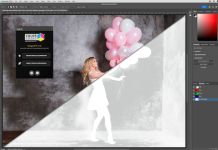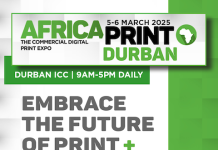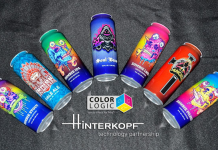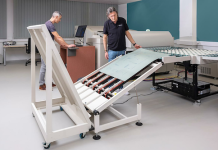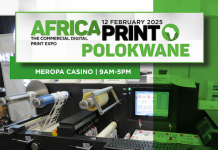New Adobe PDF Print Engine 6 includes new features that will unleash the power of emerging technologies, standards and workflows. While commercial printing continues its recovery from the business impact of the Covid-19 pandemic, industrial printing continues its rapid growth with the development of innovative applications that harness the power of inkjet in new ways.
The capabilities in PDF Print Engine 6 will empower all print segments, delivering exceptional print quality, maximum efficiency and increased automation with print-time decisions based on job intelligence.
PDF Print Engine 6 is optimised and updated to take full advantage of the latest system hardware and imaging science. The new colour features in version 6 will accelerate the adoption of spectral colours by brand owners, and increase market traction for single-inkset production workflows, driving both digital and analogue presses. Prepress operators can leverage and precisely control the full colour palette available on press, for vivid and accurate reproduction of corporate brand colours, graphics and images. The reduced switching overhead between jobs will save time and money, especially as average run-lengths continue to decline.
New features in Adobe PDF Print Engine 6:
– Streamlined Expanded Colour Gamut (ECG) Processing. Single-stage, high-performance colour conversions for efficient and precise output to presses running Orange and/or Green and/or Violet inks (OGV) in addition to CMYK process inks.
– Spectral Brand Colours. The new spectral module will process spectrally defined spot colours so that they can be seamlessly colour managed with other job elements.
– Sophisticated Image Re-sampling. When resizing an image, a powerful new algorithm will generate optimised colour values for derived pixels.
– Integrated Graphics and Manufacturing. Advanced methods to manage and automate post-press and inline embellishments such as varnish and foils, along with other non-graphic elements, and converting dielines.
– Derived planes/plates. Varnishes and white underprints can be dynamically auto-generated from job elements at run-time.
– Enhanced variable printing. In conjunction with the Mercury scalability architecture, PDF Print Engine 6 delivers enhanced support for Variable Data Print (VDP) and variable product print workflows that can scale to drive any press at its rated speed.
‘The Adobe Print Family is proud to launch version 6 of PDF Print Engine, our flagship imaging platform for commercial, packaging and textile printing,’ said Amit Dayal, VP and GM, Digital Advertising, Learning and Publishing, Adobe. ‘As new colour methods gain acceptance, the industry needs sophisticated controls to maximise their potential, and more automation everywhere. The new features in PDF Print Engine 6 will accelerate workflows and boost productivity. Most importantly, it will give print service providers the edge they need to capture new business and grow profits.’
‘With our 30+ year commitment to delivering the fastest and highest quality print, we know what it takes to get the best performance and image quality in a DFE solution,’ said John Henze, VP of Sales and Marketing, EFI Fiery. ‘Our long-term partnership with Adobe helps us achieve these objectives. Customers will benefit from Adobe PDF Print Engine 6 through improved Fiery colour accuracy across applications using spectral data-driven colour workflows.’
‘The long-standing partnership between Konica Minolta and Adobe has provided comprehensive value for digital printing in commercial printing and label markets worldwide,’ said Mototaro Noguchi, General Manager, Industrial Printing Business Unit, Konica Minolta. ‘In particular, the superior image quality and colour reproduction for brochures, photo books, leaflets, and labels as well as the high performance required for variable printing are achieved by combination with Konica Minolta’s DFE and Adobe’s APPE technology, including the Mercury RIP architecture and PDF/VT processing.’
‘SCREEN has been providing Computer to Plate and various ink jet printing system over the years to meet the market demands of the printing industry, which continue to change rapidly,’ said Yukiyoshi Tanaka, President, SCREEN Graphic Solutions. ‘Under the partnership for more than 25 years with Adobe, we have adopted its RIP Core as the development platform for our original controller and collaborated to modernise the production environment. The enhancements for packaging in Adobe PDF Print Engine 6 definitely match our direction. We are sure that collaborating with Adobe more than before, becomes the latest and the best solution for various customers.’
‘Canon Production Printing and Adobe are true strategic partners in providing industry leading best-of-breed rendering technology via the Adobe PDF Print Engine,’ said Bert van Agen, Vice President Strategy & Alliances, Canon. ‘Combining our print server technology with Adobe technology enables us to deliver unmatched consistency and predictability in the print production workflow and helps our customers realize best-in-class reliability and performance.’
‘The Adobe PDF Print engine is more than a technology to Agfa. It is a versatile solution that meets the requirements of Agfa’s diverse customer base,’ said Erik Peeters, Market Manager Commercial, Agfa. ‘Whether it is cloud capability for a commercial printer subscribing to Apogee, or extreme high-resolution and precise rendering for bank note printing, it’s all embedded. As a result, it was a natural decision to select APPE for Amfortis, our packaging workflow. And to exceed the expectations of that print segment, Agfa looks forward to the innovations that are part of APPE version 6 as they will increase efficiency at our packaging printers and converters in various ways.’
ADOBE
https://www.adobe.com







